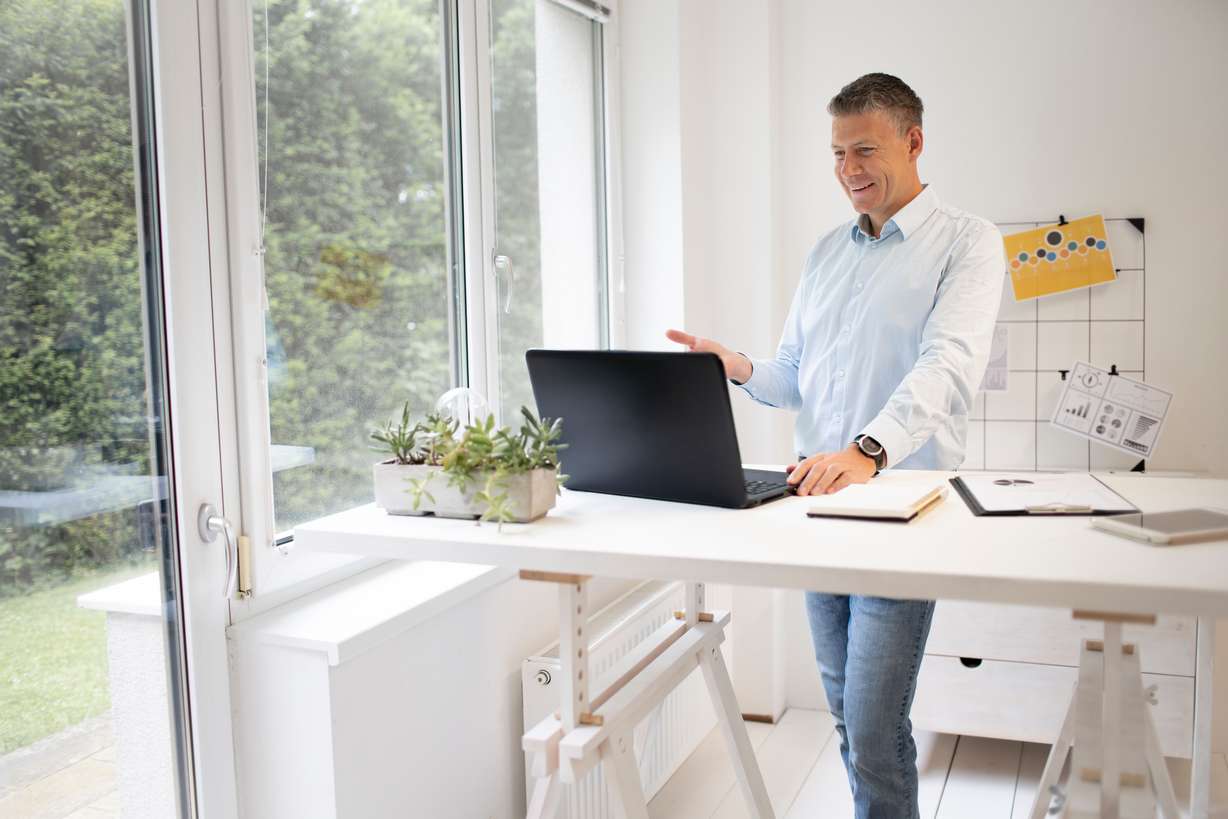Estimated read time: 5-6 minutes
The average American adult now spends more than half of their day sitting — the highest numbers ever recorded. These alarming statistics make sense. Most people are employed in desk jobs, commute to work, and spend some of their free time watching TV.
It's a distressing trend because plenty of evidence shows that sitting for too long can take a toll on your body, especially your heart.
"Inactivity likely contributes to a large part of cardiovascular disease," says Alan Jacobsen, MB, BCh, BAO, a sports cardiologist at University of Utah Health. "Cardiovascular disease occurs because of both genetic and environmental factors like lifestyle. We can't change genetics, so we need to work on our lifestyle factors."
Jacobsen specializes in evaluating and caring for athletes and highly active individuals. He knows the importance of an active lifestyle in achieving and maintaining good heart health.
"Physical exercise is a therapy with a proven benefit, both for those who don't yet have heart disease and those who already have a cardiac condition," Jacobsen says. However, he is also aware of studies that suggest exercise alone may not be enough to reverse the damage to our hearts of too much sitting.
In a report published in the Journal of the American College of Cardiology in November, 2924, a team of researchers from Mass General Brigham concluded that an "Excessively sedentary lifestyle — spending most of your waking hours sitting, reclining, or lying down — corresponds to an increased risk of heart disease, namely heart failure and death."
All 90,000 participants were asked how much time they spend sitting before they started the week-long study. They also wore accelerometers containing the same components found in smart watches and other devices that measure human movement. Jacobsen believes that was a smart way to approach the study since most people underestimate how much time they spend sitting.
"I was impressed by this study," Jacobsen says. "It seemed to be rigorous, and although it did have some limitations and data not applicable to everyone, the overall message it communicates is clear. The classic individual this research applies to is someone who spends the entire week working in an office or working at a job that requires them to be sitting and not moving very much. Then they go out on the weekend and try and get all their exercise in and hope that will help them maintain their health."
The message is clear: you cannot exercise away the negative impact of spending 10 or more hours a day sitting. People all need to move more and sit less. Your heart is like any other muscle in the body, and it requires regular exercise to stay strong and work efficiently.

"I always encourage my patients to exercise as much as they can, but that doesn't take away from the risk you develop by having a high level of sedentary behavior," Jacobsen says. "It is a challenge to get around all the sitting, but now we have to move from knowing the dangers of a sedentary lifestyle to measuring whether taking walking breaks, using a standing desk, or trying to track your steps has a beneficial impact."
Even without the data on movement breaks and step counting, Jacobsen encourages his patients to incorporate more moderate, high-intensity exercise and strength training into their daily lives. "The recommended 150 minutes a week of aerobic activity should get your heart rate up and you breathing deeply," Jacobsen says. "If you are talking to someone on the telephone, they should know that you are exercising."
Some degree of strength training is also important to improve overall muscle and bone strength. Jacobsen says it has some vascular health benefits as well. Most importantly, he suggests, "We want you to spend as little time as you can just sitting. Anything you can do while you are standing or moving around, we want you to be doing that. If you are out walking your dog or talking to someone on the phone, use a cell phone and walk while you talk."
COVID-19 pushed the levels of sedentary behavior up as many people worked and went to school from home. However, enough time has passed to make Jacobsen hopeful that Americans have adapted to their new normal.
"If they are still working from home, maybe now they are spending less time commuting," he says. "This is an opportunity to use that time for dedicated physical exercise."

The human body is designed for movement and in order to keep it healthy, the key is to reduce sedentary time and increase daily activity. Jacobsen says that educating the public on the risks of insufficient exercise may no longer be so crucial as most people are aware of the need for physical exercise. Rather, it's about convincing and motivating people to embrace a less sedentary lifestyle.
"Getting people to change their behavior is a lot more difficult than providing the information and education," Jacobsen says. "Finding the right motivating factors to get people to change their behaviors is something we all really need to work on."
For those willing to get moving, Jacobsen has a simple and effective way to support them. "I often provide my patients with a prescription for exercise," he says. "I'll provide information on the frequency, intensity, time, and type of exercise, then make sure they know exactly what they should be doing."
The more you move, the stronger your heart will work to keep you healthy.









